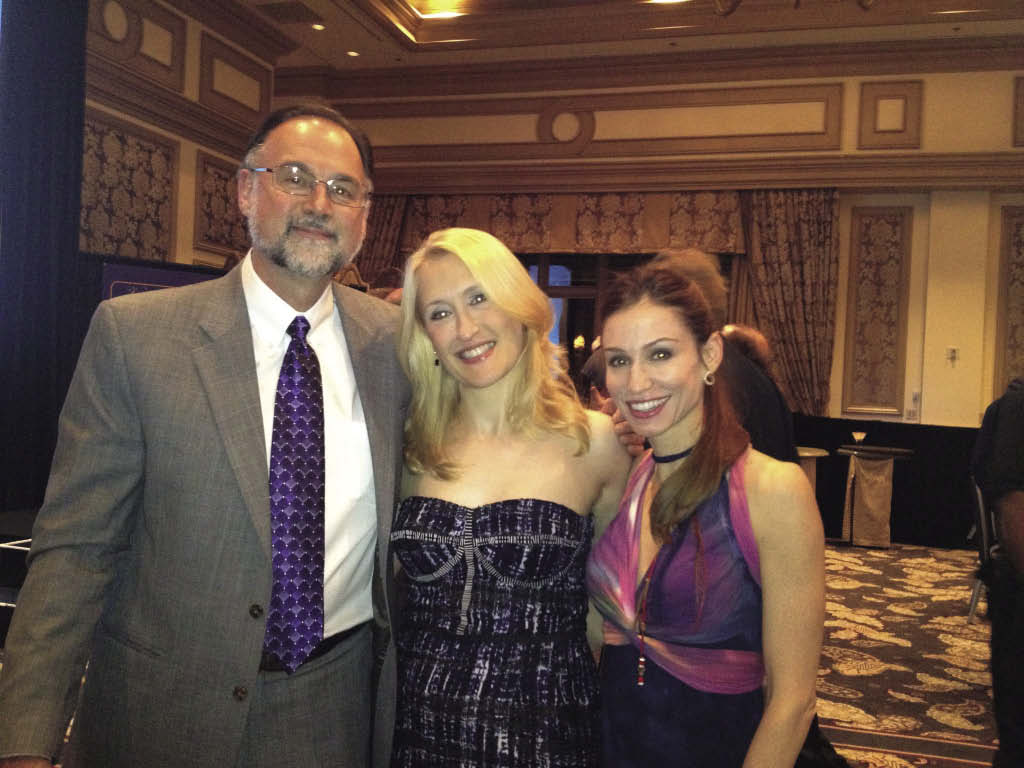 |
| S. Randolph Waldman, MD, is a bridge builder among specialties. |
By Denise Mann
When S. Randolph Waldman, MD, first tried his hand in event planning in 1991, he was admittedly a lot less savvy than he is today.
While he is predominately a facial plastic surgeon, Waldman’s minor, so to speak, is most certainly event planning. His opus—the Vegas Cosmetic Surgery meeting, which is also known as the Multi-Specialty Foundation meeting—is now in its ninth year and growing at an impressive rate of close to 20% per year. In 2012, there were about 1,300 badges printed, and there will likely be 1,500 printed for the 2013 meeting.
The early meetings took place in Newport Beach, Calif, under the tutelage of H. George Brennan, MD, FACS, but as momentum began to swell, Waldman knew he needed a bigger, grander outlet. The luxe Bellagio Hotel in Las Vegas was—and remains—the perfect fit.
In its new locale, the meeting has grown so successful that many marketers have tried to imitate the model and capitalize on its success, and they are learning the hard way that meeting planning is not as easy as Waldman makes it look as he strolls through the halls of the Bellagio between sessions.
“Imitation is the best form of flattery,” Waldman says. “When people try to copy your program and words, the initial reaction is annoyance, but then you figure out that you would rather be the trendsetter.”
It takes a lot of work to keep this frenetic pace. “I work 16-hour days on average, and maybe that drops to 8 on the weekends,” he says. “I work at my practice by day and focus on the meeting during the weekends and at night, as much as my wife will let me.”
Still, he doesn’t consider himself an entrepreneurial doctor. “I admire those types, but that is not me.” Waldman is more of a ringmaster and a bridge builder.
 |
|
 |
|
| “My ideal practice has two plastic surgeons, two facial plastic surgeons, a cosmetic-minded dermatologist, and an oculoplastic surgeon.” S. Randolph Waldman |
ENGAGE THE CORE
The meeting was born during a tumultuous time for plastic surgery and plastic surgeons. “All we needed to do was come together,” Waldman says. He sought to find a common ground for oculoplastic surgeons, dermatologic surgeons, facial plastic surgeons, and general plastic surgeons—whom he considers core. (Others beg to differ, and “core” has become somewhat of a fighting word in this space.)
Waldman’s notion of a multispecialty meeting wasn’t just having a dermatologist as a keynote speaker at a facial plastic symposium. “It is a meeting where you are serving the interest of each specialty,” he says.
And he embraces this same concept at his practice, Waldman-Schantz Plastic Surgery Center. They recently moved the practice to a new 11,000-square-foot facility in Lexington, and he hopes to add additional staff and create a true multispecialty practice. “My ideal practice has two plastic surgeons, two facial plastic surgeons, a cosmetic-minded dermatologist, and an oculoplastic surgeon,” he says.
Former American Academy of Facial Plastic and Reconstructive Surgery (AAFPRS) President and Louisville, Kentucky-based facial plastic surgeon Donn Chatham, MD, has been by Waldman’s side since the inception of the Multispecialty Foundation. “The genesis of this came from a desire to facilitate an apolitical exchange of information between the four core aesthetic specialties, drawing from many of the leading physicians around the USA and other countries, as well,” he recalls. “It has not been easy historically for an existing medical organization to convince leaders of ‘competing’ organizations to speak and participate in their symposia on their turf.”
Slowly but surely, “all of us began to view each other more as colleagues with many things in common rather than as medical-political adversaries,” Chatham says. “We could begin to work on issues such as patient safety, public education about the value of properly trained, aesthetically savvy physicians, evidence-based outcomes, and legislative threats more closely.”
Both Chatham and Waldman were invited by incoming American Society for Aesthetic Plastic Surgery (ASAPS) President Renato Saltz, MD, to attend a leadership meeting to help find ways for the core aesthetic specialties to work together. The friendships made at this meeting have continued, and for the past 2 years, Saltz has joined Chatham and Waldman as the co-chairs for The Vegas Cosmetic Surgery Symposium. What’s more, the new Physicians Aesthetic Coalition, or “PAC,” was formed as a result of this kinship.
 |
 |
| Waldman is a surgeon first and foremost. He practices what he preaches in his multispecialty practice. |
THE NEW NORMAL
The Multispecialty Foundation changed the playing field, but it also reinvented—or at least reshaped—other aspects of traditional medical meetings. “I have always felt the optimal meeting was not one of those mega meetings where you have a hall with 1,500 people in a lecture sitting in chairs,” Waldman says. Instead, he believes the best way to learn is the way we did in school—smaller classroom-like environments with longer seminars on important, pressing, or even controversial, thought-provoking topics.
 |
| Waldman injects his own patients. |
 |
| Donn Chatham, MD, and colleagues in Vegas. |
Vegas Cosmetic Surgery was also the first aesthetic meeting to really spotlight practice management and marketing—a subject that physicians in elective health care fields have had no choice but to embrace if they are to survive—and thrive—in the current economic climate.
“The emergence of the ‘practice management’ sessions as an important component of education has mushroomed over the past few years,” Chatham says. “Physicians and their staffs realize the value of good business practices as a vital component of success in today’s marketplace.”
For these reasons, when Waldman is planning the program, he tends to rebuke the same-old, same-old. “If you give the same talk at every meeting, I am not very likely to include you,” he says. “If it is something that adds quality to what we do, I am the first person to get behind it,” he says.
Gregarious and uninhibited, Waldman has learned the hard way that you can’t pick favorites (even if you have them). “Everybody wants you to, but you can’t,” he says. “The larger the meeting, the more difficult the process becomes.”
Of course, there is some pressure to maintain this trend-setting status. “It keeps me thinking about how I am going to raise the bar one more level.”
And it is already set pretty high.
Denise Mann is the editor of Plastic Surgery Practice. She can be reached at [email protected].



